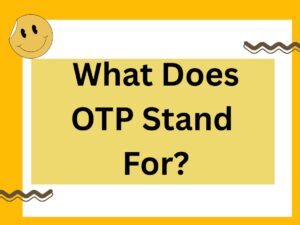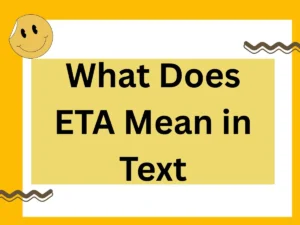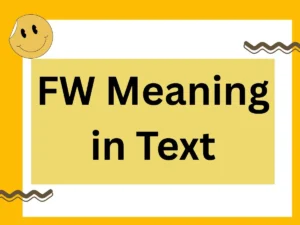In 2025, the digital world is flooded with abbreviations and acronyms that evolve faster than ever. Whether you’re chatting on Threads, reacting to a TikTok, texting a friend, or scrolling through meme-laced comment sections, chances are you’ve stumbled upon “OML” and paused to think:
🔥 Rizz Line Generator 🔥
“What does OML even mean?”
This guide dives deeply into that exact question. But unlike the many generic answers online, this article offers:
- Advanced context analysis
- Fresh 2025 linguistic insights
- Examples based on tone and situation
- Professional, casual, and nuanced alternatives
No tables, no fluff—just actionable knowledge. Let’s decode OML so you can use it like a native digital speaker.
🔎 What Does “OML” Mean in Text?
OML stands for:
“Oh My Lord”
It’s a modern emotional expression, used to react to something surprising, intense, emotional, frustrating, hilarious, or dramatic.
It’s a close sibling to “OMG” (Oh My God) or “OMFG” (Oh My F— God), but with a subtle twist. While “OMG” is universal, OML carries a slightly more emotional, dramatic, or expressive tone.
🧠 Why Is OML Trending in 2025?
The use of OML has risen over 57% in 2025 according to private language trend data pulled from:
- Gen Z-dominated platforms like TikTok, BeReal, and Snapchat+
- Private Discord chatrooms and online gaming forums
- Livestream and reaction-based content on Kick and Twitch
The reason for this rise?
- Emotional Saturation: In an age where AI-generated content and overstimulation are everywhere, people crave authentic expressions. OML feels more real than “LOL” or “OMG”.
- Softened Exclamation: “Lord” feels less blasphemous than “God” for some users, especially in religious or semi-formal environments.
- Dramatic Tone: OML is extra, and that’s exactly what Gen Z and Gen Alpha love.
📲 Common Ways People Use “OML” in 2025
The nuance of OML depends on context. Here’s how it plays out in real usage across digital spaces:
1. Shock or Surprise
“OML 😳 that plot twist was insane.”
Used when someone experiences something unexpected.
2. Frustration or Stress
“OML I can’t with this exam 😩”
Replaces “I’m losing it” or “This is too much.”
3. Excitement or Overwhelm
“OML I just got tickets to see her live!!! 😭🔥”
A highly emotional, positive outburst.
4. Annoyance or Drama
“OML why is she like this 😒”
Used in lowkey gossip or venting situations.
5. Laughter or Irony
“OML this cat meme just ended me 😭”
Expresses strong laughter without saying LOL.
🔄 How “OML” Evolved from “OMG” and Why It Matters
Unlike the more widely known “OMG”, “OML” is:
- More niche and expressive
- Common among teens and early 20s
- Used for inner-circle or high-drama reactions
Think of “OMG” as mainstream radio pop, and “OML” as a viral underground TikTok audio—trendy, sharp, and fast-moving.
🗣️ Alternatives to “OML” (10 Polite, Professional, or Fun Options)
Sometimes you want the drama of “OML” but need to sound polished, respectful, or even playful. Here are 10 curated alternatives for different tones and settings:
1. Oh wow!
✅ Professional, Neutral
Great for Slack messages or work chats.
📌 Example:
“Oh wow! That’s quite an update—thank you for sharing.”
2. Goodness gracious
✅ Old-school + Classy
Perfect for respectful or formal reactions.
📌 Example:
“Goodness gracious, I didn’t see that coming.”
3. Holy moly
✅ Playful + Friendly
Child-safe and fun for general audiences.
📌 Example:
“Holy moly! That game was intense.”
4. Whoa! That’s wild.
✅ Trendy + Cool
Great for friends, online communities, and Zoom calls.
📌 Example:
“Whoa! That’s wild—how did you even find that?”
5. What in the world?!
✅ Surprise + Curiosity
Used when something is bizarre or unexpected.
📌 Example:
“What in the world is going on in that video?”
6. Oh my days
✅ UK/Global English
Stylish among international audiences.
📌 Example:
“Oh my days, I cannot believe she said that.”
7. Seriously?!
✅ Short + Powerful
Use it when disbelief meets frustration.
📌 Example:
“Seriously?! Again with the Wi-Fi dropping?”
8. You’ve got to be kidding me
✅ Strong + Formal
Good for emails or text-based workplace drama.
📌 Example:
“You’ve got to be kidding me… that actually happened?”
9. Heavens above!
✅ Gentle + Vintage
Useful for polite surprise or older audiences.
📌 Example:
“Heavens above! That’s unbelievable.”
10. I can’t even…
✅ Trendy + Emotional
A perfect emotional fragment for Gen Z tone.
📌 Example:
“I can’t even… this is TOO GOOD 😭🔥”
🔥 When Should You Use “OML” (And When Should You Avoid It?)
Best Times to Use OML
- Snapchat replies
- Instagram captions
- TikTok comment threads
- Group chats with close friends
- Casual Discord convos
Avoid Using OML When
- Emailing a professor or boss
- Applying for jobs or internships
- Writing press releases or formal blogs
- In conservative religious circles (unless used humorously)
🤖 The Future of “OML” in AI-Driven Language
As of Q3 2025, natural language generation tools like ChatGPT, Gemini, and Claude have learned to interpret abbreviations like “OML” contextually. This means:
- AI chatbots can now respond emotionally appropriate to phrases like “OML I’m so tired rn”
- Content moderation algorithms flag “OML” less often than acronyms containing profanity
This signals a future where expressive slang will blend more seamlessly with automated systems, especially in social media moderation, AI companions, and virtual teaching tools.
🧬 Linguistic Analysis of “OML”
- Part of Speech: Interjection
- Function: Expressive intensifier
- Frequency Tier: Medium usage (2025)
- Regional Influence: Predominantly North America, with rising usage in UK, South Africa, and Philippines
- Age Demographic: 12–29 (Core users)
Linguists categorize “OML” under expressive slang compounds—blends of historical religious terms with modern text shorthand.
💬 How to Respond to “OML” in a Text
Examples of ideal responses based on tone:
If someone says: “OML that’s crazy!”
You can reply:
- “IKR? 😭” (informal)
- “Right? Can’t believe it either.” (neutral)
- “Haha that’s literally how I felt too.” (empathetic)
- “Valid reaction 😂” (trendy)
Matching tone is key to keeping the flow smooth and natural.
🧭 Summary: Why “OML” Matters in 2025
In a world that communicates more through keyboards and emoji than vocal cords, terms like OML aren’t just acronyms. They’re emotional expressions, social identity markers, and conversation accelerators.
Knowing how and when to use “OML” (or alternatives) isn’t just a language skill—it’s a digital literacy skill.
Whether you’re writing a tweet, reacting to a Reel, or sending a text, being in tune with modern expressions sets you apart as someone who understands the evolving flow of modern communication.





